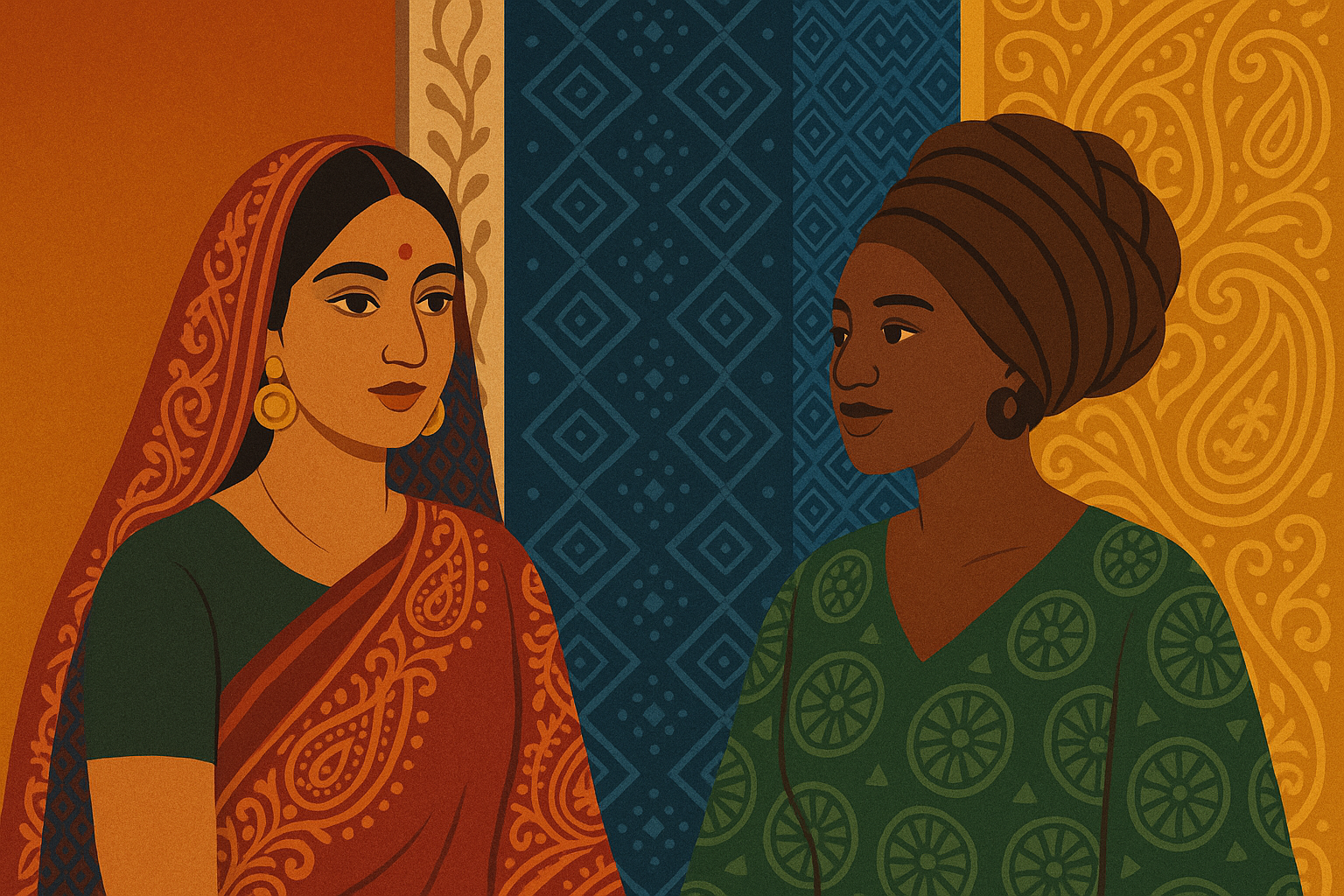Khadi, a uniquely breathable fabric that has adorned Indians for centuries, signaled an unrelenting declaration of national pride and defiance of colonialism. Aso oke, a hand-woven cloth worn by the Yoruba people, is among the several vibrant displays of Nigerian craftsmanship where regality, celebration, and cultural expression converge. The Dhaka fabric is Nepal's national identity woven into intricate and sophisticated clothing, including sarees, caps, and shawls. Bangladesh's famed Dhaka Muslin stands as an unparalleled testament to weaver dexterity and a textile wonder. The Osariya from Sri Lanka, distinguished by its regal roots and draping style, remains a graceful staple at formal occasions and official ceremonies.
For Nigerians and the above mentioned South Asian countries, textiles are a reflection of the quiet wisdom passed from hand to hand and loom to loom, generation after generation. These fabrics carry stories through threads. Whether it is the Nigerian A'nger Cloth worn by the Tiv people, India’s intricate Banarasi silk woven with gold zari, Nepal’s hand-loomed Tibetan wool blends, Sri Lanka’s Batik traditions coloured in tropical motifs, or Bangladesh’s Nakshi Kantha embroidery turning old cloth into art—each is an archive of place, memory, and pride.
Despite differing origins, these countries’ textile traditions share deep parallels. Artisanship and ancestral knowledge are deeply intertwined in each country, fostering strong community bonds. Weddings, religious festivals, national celebrations, and rites of passage are all stitched in textile choices that resonate with meaning. Younger generations and urban designers are reimagining their roots, weaving contemporary fashion into timeless traditions to create enduring legacies.
This wave can be seen in all five countries:
- Nigerian designers have brought the global spotlight to indigenous fabrics, including Adire, by blending tradition with haute couture.
- Indian designers have elevated regional fabrics and placed them on the global stage, fueling a renewed vigor in the youth toward traditional wear.
- Forming an industry that promotes and sustains artisanship, Nepal's Dhaka fabric can be seen as a patriotic symbol.
- Sri Lanka's Colombo Fashion Week has put the country's textiles on the ramp of cultural diplomacy. Infrastructure like the Jaffna Cultural Center offers visitors glimpses of Sri Lanka's textile traditions.
- Bangladesh witnessed the revival of Jamdani weaving as it gained Geographical Indication (GI) status in 2016. The younger population has found ways to reconnect with their cultural identity through dedicated events showcasing the fabric.
In a fast-paced world that seeks goods made by machine perfection, these hand-woven traditions stand as markers of cultural sovereignty. From cultural centers to fashion runways and trade exhibitions, textiles continue to encapsulate the stories of each generation it passed through.
As the Nigerian High Commission in India, concurrently accredited to Nepal, Sri Lanka, and Bangladesh, we recognize that these nations are bound by reverence for craft and cultural continuity. Each thread spun, dyed, and woven is a gesture of remembrance and resilience. Through the weaves of textiles, we see not only the fabric of our societies but also the common dignity and heritage that unite us.
